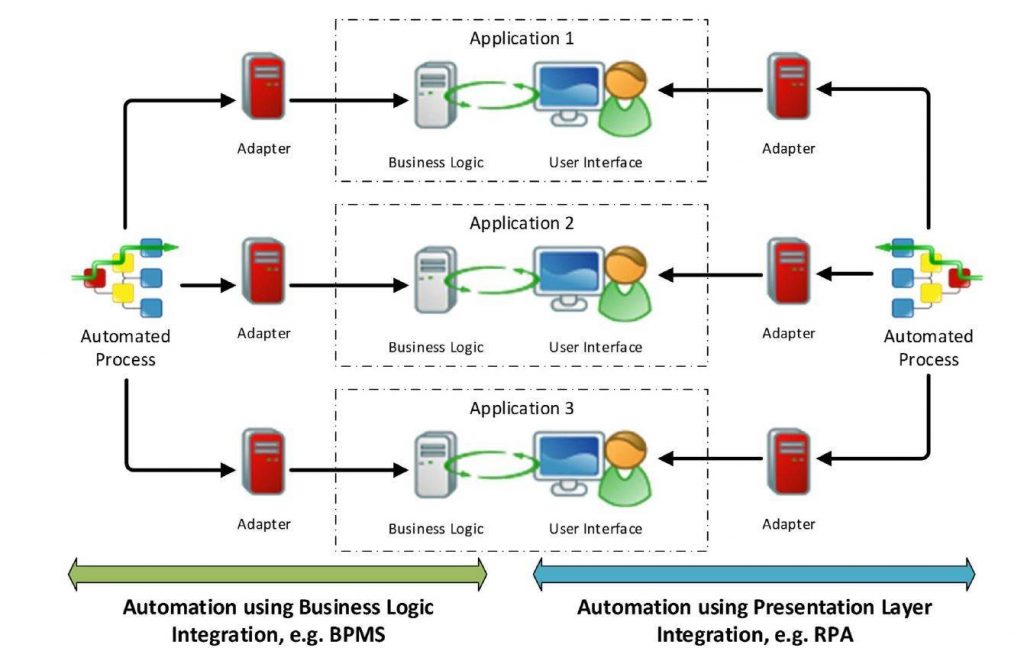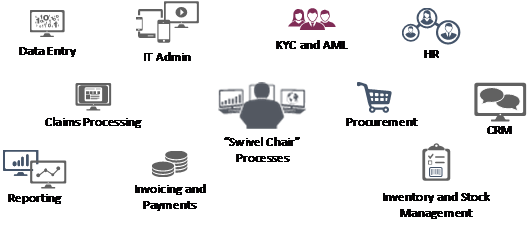Process automation and digitization have been around for many years in the service sector, from workflow engines and electronic document management (EDM) systems to business process management (BPM) software. At its simplest, Robotic Process Automation or RPA is the automation of business processes using software tools to interact with existing applications.
So what is Robotic Process Automation?
In broad terms, there are two basic approaches to implementing process automation. The first uses business logic integration to connect the automation software directly to each application’s business logic via an appropriate adapter. This approach is used by most mainstream automation software such as typical business process management systems (BPMS).
The second approach uses adapters that connect to the user interface of each application, rather than to its business logic. This is the approach taken by RPA solutions, which behave like a normal process participant, accessing each application as a human user would. The automated process behaves like a virtual worker focused on normally human-done tasks, and replaces the human element completely.

Fig. 1: Two Approaches to Process Automation
The robotic tool is capable of reading and manipulating data, processing rules-based transactions and interacting with a range of systems to store that data, trigger further processes, or send communications and alerts. All of this can be done in a fraction of the time that it would take a human being, for more hours than a human can work and with 100% accuracy every time. Thus, RPA gives organizations the ability to achieve greater customer satisfaction, increase productivity, reduce process-handling times and enhance compliance.
RPA
As with the introduction of robots into manufacturing plants from the 1960s onwards, RPA is changing both front and back office business processes and workflows including customer service, data entry and auditing. In fact, any manually intensive, repetitive, rules-based transactional process can be automated using RPA, especially if multiple systems need to be accessed for each transaction.
RPA is especially suitable for so-called “swivel chair” processes, where inputs from one or more systems (e.g. e-mail, web forms, PDF documents, spreadsheets etc.) are received and handled using defined business rules, and then the outputs and/or some or all of the original data inputs are entered into one or more other systems such as CRM or corporate ERP systems.

Fig. 2: Common Target Processes for RPA
RPA software, acting as a normal user does, interacts only with the user interface (presentation layer) of the various systems used within the process, making implementation “training” of a robot relatively easy. No back-end interface or changes to legacy applications is required, and the robot can be easily retrained as these applications change.
Learn more about digitization here.


